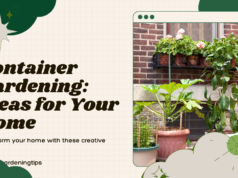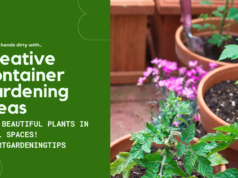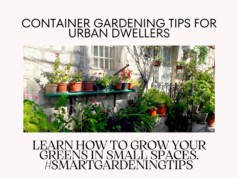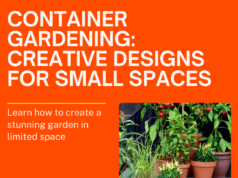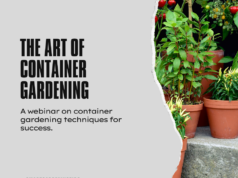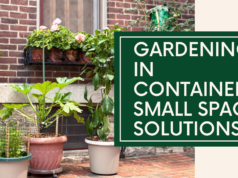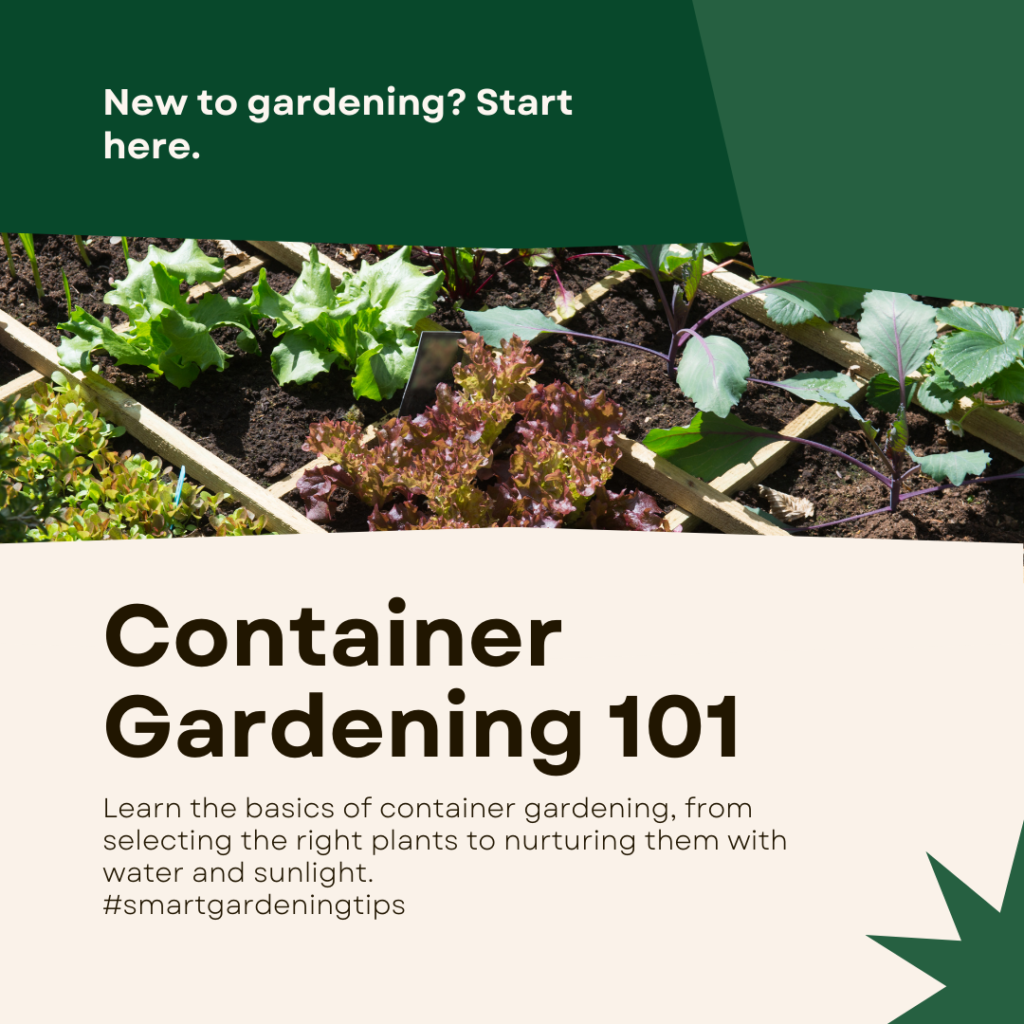
Welcome to the world of container gardening! Whether you have a small balcony, limited outdoor space, or simply want to bring some greenery into your urban environment, container gardening is the perfect solution. In this article, we will provide you with beginner-friendly tips to help you create a thriving container garden, no matter your level of experience.
Container gardening allows you to grow plants in pots, giving you the flexibility to create a beautiful garden in any space. It’s a great way to enjoy the joys of gardening without the need for expansive outdoor areas or complicated maintenance. With the right knowledge and some handy tips, you’ll be well on your way to becoming a successful container gardener.
Key Takeaways:
- Container gardening is a convenient and flexible way to start your own garden, even with limited space.
- Choosing the right containers and soil is crucial for the health and growth of your plants.
- Understanding the importance of soil and proper watering techniques will help your container plants thrive.
- Selecting the right plants for your specific space, climate, and sunlight requirements is essential.
- Maintaining your container garden and troubleshooting common issues will ensure continued success.
Benefits of Container Gardening for Beginners
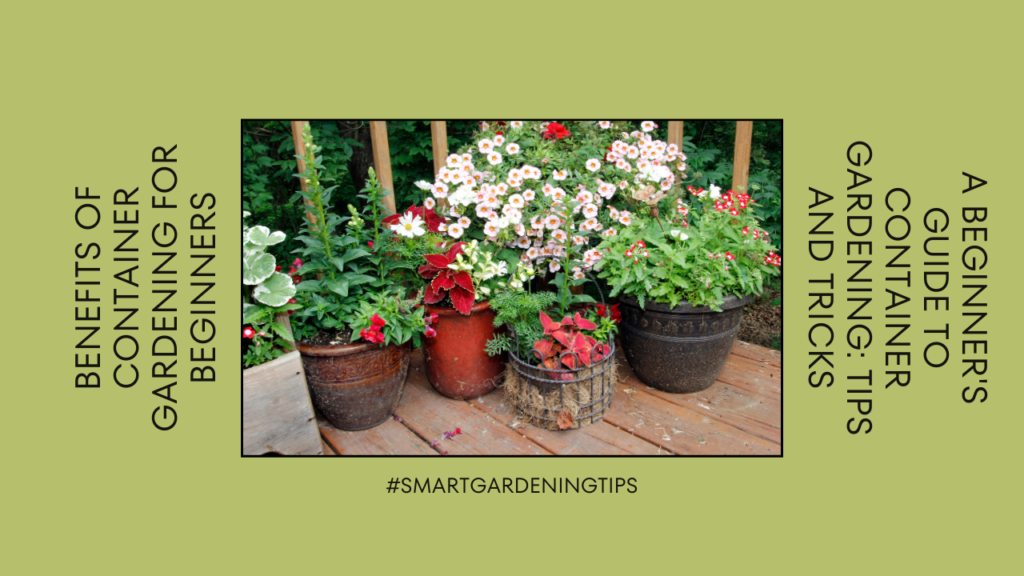
Container gardening offers numerous benefits and advantages for beginners, making it an ideal choice for those with limited experience or space. Whether you live in a small apartment, have a tiny balcony, or simply want to add some greenery to your indoor environment, container gardening provides a convenient and flexible solution. Let’s explore some of the key benefits that container gardening can offer to beginners:
1. Versatile and Adaptable
Container gardening allows you to grow plants in a variety of containers, such as pots, planters, or even repurposed items like buckets or crates. This versatility enables you to adapt your garden to the available space and create a personalized green oasis that suits your style and preferences.
2. Easy Maintenance
One of the major advantages of container gardening for beginners is the ease of maintenance. Compared to traditional in-ground gardening, container gardens require less weeding and have lower risks of pests and diseases. Additionally, container plants are more accessible, allowing you to easily monitor and tend to their needs.
3. Accessibility
Container gardening offers accessibility to individuals who may have physical limitations or difficulty accessing outdoor garden areas. With containers positioned at a comfortable height, it becomes easier to plant, water, and maintain your garden, allowing everyone to participate and enjoy the therapeutic benefits of gardening.
4. Space Efficiency
For those with limited space, container gardening provides an excellent solution. You can maximize your available space by utilizing vertical gardening techniques, such as trellises or hanging baskets. This allows you to grow a variety of plants even in small areas, such as balconies, patios, or windowsills.
“Container gardening enables anyone, regardless of their gardening experience or living situation, to create a vibrant and flourishing garden right at their fingertips.”
5. Mobility
Another advantage of container gardening is its mobility. Whether you’re renting a home, moving frequently, or simply enjoy rearranging your outdoor space, container gardens can easily be relocated. This flexibility allows you to experiment with different plant arrangements and explore the best sun exposure for your plants.
Infographic: Benefits of Container Gardening
Take a look at the following infographic to visualize the benefits of container gardening for beginners:
Note: Remember to include the alt tag for accessibility purposes.
| Benefit | Description |
|---|---|
| Versatile and Adaptable | Container gardening allows for creativity and customization, with the ability to adapt to any space. |
| Easy Maintenance | Container gardens require less maintenance and have lower risks of pest infestations. |
| Accessibility | Container gardening provides accessibility to individuals with physical limitations or limited outdoor access. |
| Space Efficiency | Container gardens maximize space in small areas, such as balconies, patios, or windowsills. |
| Mobility | Container gardens can be easily moved around, making them ideal for renters or frequent movers. |
Choosing the Right Containers and Soil
When it comes to container gardening, choosing the right containers and soil is crucial for the success of your plants. The containers you choose will not only affect the aesthetics of your garden but also play a vital role in the health and growth of your plants. Similarly, the soil you use in your containers will provide the necessary nutrients and support for your plants to flourish.
The Importance of Choosing the Right Containers
The first step in selecting the right containers is considering the size and material. Different plants have different space requirements, so it’s essential to choose containers that provide enough room for their roots to grow. Additionally, the material of the containers can impact factors such as moisture retention and temperature regulation.
Here are some common types of containers you can choose from:
| Container Type | Pros | Cons |
|---|---|---|
| Terracotta Pots | Provide good drainage | Can dry out quickly |
| Plastic Pots | Lightweight and affordable | May retain too much moisture |
| Fabric Grow Bags | Allows for air pruning of roots | Needs support or structural framework |
| Wooden Containers | Natural appearance | May rot over time |
Consider the needs of your plants and your personal preferences when choosing the right containers. Remember to select containers that have proper drainage holes to prevent waterlogging, especially in areas with heavy rainfall or frequent watering.
The Significance of Quality Soil
Just as containers impact plant growth, so does the soil in which they grow. Quality soil provides the necessary nutrients, proper drainage, and a suitable environment for root development.
When choosing soil for your containers, keep the following tips in mind:
- Use a well-draining soil mix specifically formulated for container gardening.
- Avoid using garden soil, as it can be too compact and heavy for container plants.
- Consider adding organic matter, such as compost or peat moss, to improve soil structure and fertility.
- Ensure the soil is moist but not waterlogged, as excess moisture can lead to root rot.
By selecting quality soil, you provide your plants with the necessary foundation for healthy growth and development.
Remember, choosing the right containers and soil is the first step toward creating a thriving container garden. Take the time to consider your plants’ needs and invest in containers and soil that will provide the best environment for their growth. Doing so will set you up for success and reward you with a flourishing garden to enjoy.
Selecting the Best Containers for Your Plants
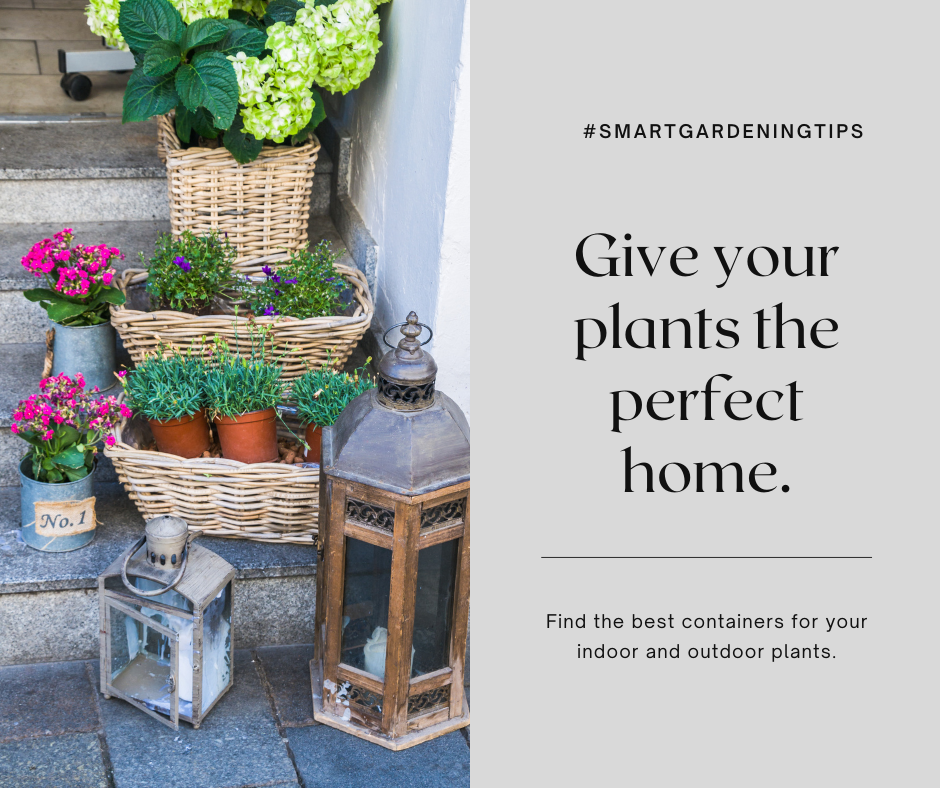
When it comes to container gardening, choosing the right containers for your plants is essential for their growth and development. Whether you’re growing vegetables, herbs, or flowers, understanding the appropriate container size, material, and drainage will ensure optimal plant growth and success in your garden.
Container Size
The size of the container plays a crucial role in the growth and health of your plants. It’s important to select a container that provides enough space for the roots to spread and allows for proper moisture retention. **Larger plants** will require bigger containers, while smaller plants can thrive in smaller ones. As a general rule, aim for a container that is at least six to twelve inches deep, giving the roots enough room to grow.
Container Material
The material of the container is another factor to consider. Different materials have varying levels of insulation, water retention, and durability. Here are some common container materials:
- Terracotta or clay pots: These containers offer excellent breathability and drainage, making them ideal for plants that prefer drier soil. However, they can be prone to cracking in freezing temperatures.
- Plastic pots: Plastic containers are lightweight, durable, and available in various sizes and colors. They retain moisture well and are less likely to crack in cold weather. Consider using plastic pots for plants that require consistent moisture levels.
- Fabric pots: Fabric containers promote better root aeration and prevent over-watering. They are lightweight, foldable, and allow for better temperature regulation. Fabric pots are perfect for plants with sensitive root systems.
- Wooden containers: These containers offer a natural and rustic look to your garden. They provide good insulation and are suitable for plants that prefer consistent moisture levels.
Drainage
Proper drainage is crucial to prevent waterlogging and root rot. Look for containers with drainage holes at the bottom to allow excess water to escape. If your chosen container does not have drainage holes, you can create them yourself using a drill or hammer and nail. Additionally, consider placing a layer of small rocks or broken pottery shards at the bottom of the container to facilitate water drainage.
Remember, selecting the best containers for your plants is the first step towards creating a thriving container garden. By considering the container size, material, and drainage, you can provide your plants with the optimal environment they need to flourish and thrive.
Understanding the Importance of Soil in Container Gardening
When it comes to container gardening, understanding the importance of soil is crucial for the success of your plants. Quality soil provides the necessary nutrients, drainage, and moisture retention to support healthy growth. Let’s explore the essential components of container soil and how to maintain optimal conditions for your plants.
The Components of Quality Container Soil:
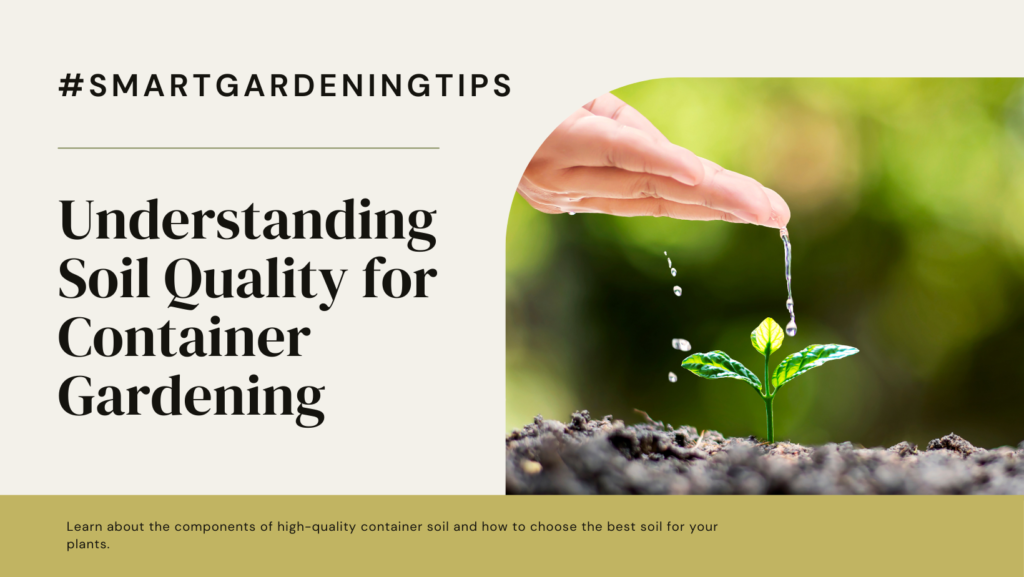
1. Loam: Loam is a well-balanced soil mixture that contains a combination of sand, silt, and clay. It provides good drainage while retaining necessary moisture for plant roots.
2. Compost: Adding compost to your soil enriches it with organic matter, improving its structure and nutrient content. Compost also helps with moisture retention, ensuring your plants receive adequate hydration.
3. Perlite or Vermiculite: These lightweight additives enhance soil aeration and drainage, preventing waterlogging and allowing roots to access oxygen.
4. Fertilizers: Incorporating slow-release fertilizers or organic fertilizers into your soil provides essential nutrients for your plants’ growth and development.
Maintaining Soil Moisture and Nutrients:
1. Watering: Regular watering is vital for container plants. Check the moisture level by poking your finger into the soil. If it feels dry at a depth of about an inch, it’s time to water. Avoid overwatering, as it can lead to root rot.
2. Mulching: Applying a layer of organic mulch, such as straw or wood chips, on top of the soil helps regulate soil temperature, conserve moisture, and prevent weed growth.
3. Fertilizing: Feed your container plants with a balanced, water-soluble fertilizer or a slow-release granular fertilizer according to the manufacturer’s instructions. This ensures a consistent supply of nutrients throughout the growing season.
Remember, the soil in your containers needs to be regularly replenished with nutrients as plants consume them. Pay attention to the specific needs of your plants and adjust your soil composition and fertilization accordingly.
By understanding the importance of soil in container gardening and providing the right conditions, you can create a thriving environment for your plants. Now that you know the essentials of container soil composition and maintenance, let’s move on to selecting the perfect plants for your containers in the next section.
Picking the Perfect Plants for Containers
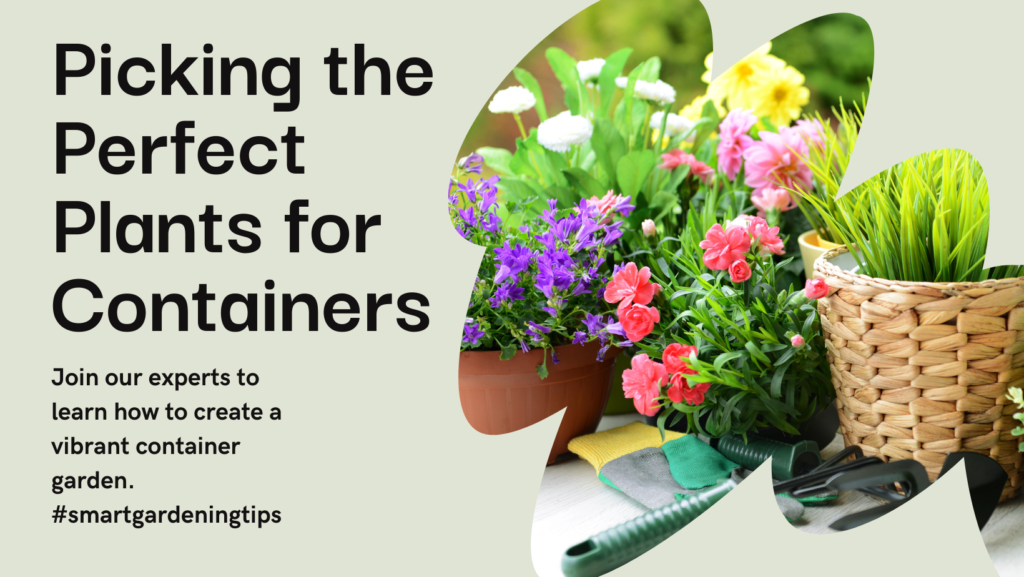
When it comes to container gardening, selecting the right plants is key to creating a stunning and thriving display. Whether you’re a beginner or have some gardening experience, choosing plants that are well-suited for containers can make all the difference.
Here are some suggestions and tips to help you pick the perfect plants for your container garden:
Consider Your Climate and Conditions
Before selecting plants for your containers, it’s important to consider the climate and conditions in your area. Different plants have different temperature and sunlight requirements, so take note of your local climate and the amount of sun your containers will receive throughout the day.
For example, if you live in a hot and sunny climate, you might want to choose plants that can tolerate full sun and are drought-tolerant, such as succulents or lavender. On the other hand, if you have a shady spot, consider shade-loving plants like ferns, begonias, or hostas.
Think About Your Gardening Experience
If you’re a beginner in container gardening, it’s important to choose plants that are relatively low-maintenance and forgiving. Opt for plants that are known to be easy to grow and can withstand some neglect.
Some great options for beginners include herbs like basil, mint, and rosemary, as well as flowers like marigolds or petunias. These plants are known for their resilience and can tolerate a range of conditions, making them ideal for those just starting out.
Consider Size and Growth Habits
When selecting plants for containers, it’s essential to consider their mature size and growth habits. You don’t want your plants to outgrow their containers or overshadow one another.
For example, if you have a small container, opt for compact or dwarf varieties of plants. This way, they won’t outgrow their space and will be more suitable for container gardening. Additionally, consider planting trailing or cascading plants like ivy or trailing petunias that can spill over the sides of the container, adding visual interest.
Remember, the key to picking the perfect plants for containers is to choose varieties that not only thrive in your climate and conditions but also align with your skill level and container size. By selecting the right plants, your container garden will flourish and bring you joy throughout the gardening season.
Continue reading to discover essential tips for selecting the right plants for your specific space and climate in the next section.
Tips for Selecting the Right Plants for Your Space and Climate
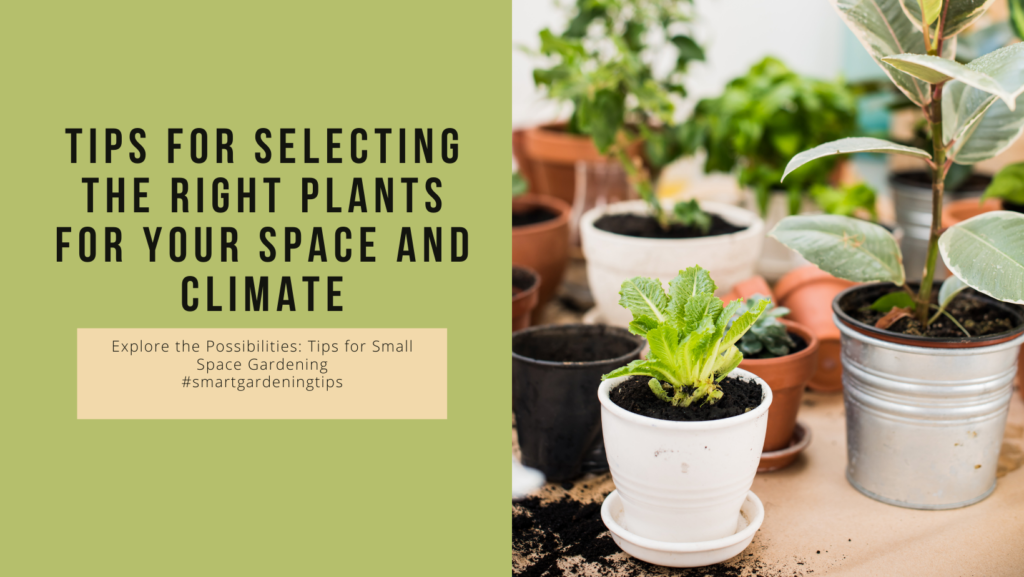
When it comes to container gardening, choosing the right plants for your specific space and climate is essential for successful growth and beautiful blooms. By taking into consideration factors such as sunlight, temperature, and the size of your containers, you can create a thriving and visually appealing container garden. Here are some tips to help you select the perfect plants for your container garden:
1. Assess Your Space and Sunlight Conditions
Before selecting plants for your containers, evaluate the amount of sunlight your space receives. Some plants thrive in full sun, while others prefer partial shade or shade. Consider the direction your containers will face and the hours of direct sunlight they will receive. This information will guide you in choosing plants that match those sunlight requirements.
2. Research Plants Suitable for Your Climate
Each plant has specific temperature and climate preferences. Research the suitability of various plants for your particular climate zone. Some plants are more tolerant of heat, cold, or humidity, while others may require more specific conditions. By selecting plants that are well-suited to your climate, you increase their chances of thriving in your container garden.
3. Consider the Size of Your Containers
The size of your containers will determine the size and variety of plants you can choose. Larger containers can accommodate taller plants or multiple plant varieties, while smaller containers may be better suited for compact or trailing plants. Ensure that the plants you select can fit comfortably within the confines of your containers and have enough space to grow.
4. Take Note of Watering and Maintenance Requirements
Plants have different watering and maintenance needs, so it’s important to consider the time and effort you are willing to invest in caring for them. Some plants require frequent watering, while others are more drought-tolerant. Similarly, certain plants may need regular pruning or fertilizing. Choose plants that align with your gardening style and the amount of care you can provide.
5. Explore Complementary Plant Combinations
Consider adding visual interest to your container garden by selecting plants that complement each other in color, texture, or growth habit. Combining plants with different foliage colors or incorporating a mix of flowers and greenery can create a stunning display. Additionally, pairing plants with similar water and sunlight requirements can make maintenance easier.
By following these tips for selecting the right plants for your space and climate, you can create a thriving container garden that brings beauty and joy to your surroundings. Experiment with different plant varieties, colors, and combinations to personalize your garden and make it truly unique.
| Plant | Sunlight Requirements | Temperature Tolerance | Container Size | Watering Needs |
|---|---|---|---|---|
| Geranium | Full sun to partial shade | Hardy to USDA Zone 9 | Medium to large containers | Regular watering |
| Tomato | Full sun | Hardy to USDA Zone 10 | Large containers | Consistent moisture |
| Succulents | Bright indirect light to full sun | Hardy to USDA Zone 9 | Small to medium containers | Infrequent watering |
| Lavender | Full sun | Hardy to USDA Zone 5 | Medium to large containers | Well-drained soil, infrequent watering |
Watering and Maintenance Tips
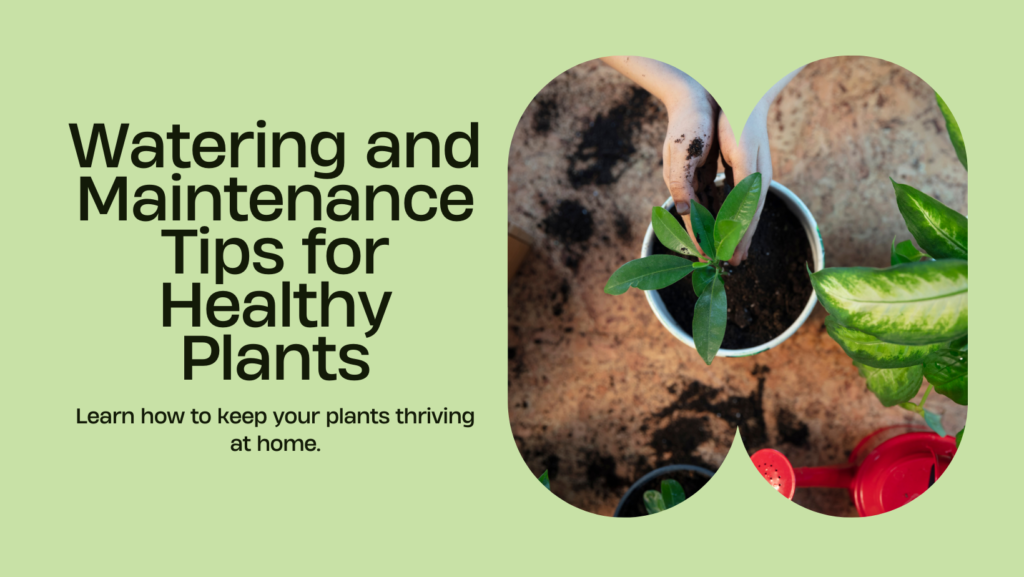
Proper watering and maintenance are essential for keeping your container plants healthy and thriving. By following these tips, you can ensure that your plants receive the right amount of water and care they need to flourish.
1. Watering Techniques
When it comes to watering your container garden, it’s important to strike the right balance. Overwatering can lead to root rot and other moisture-related issues, while underwatering can cause wilting and stunted growth.
Remember to water your container plants thoroughly but allow the excess water to drain out. This helps prevent waterlogging and promotes healthy root development.
Here are some watering techniques to keep in mind:
- Check the soil moisture: Before watering, gently insert your finger into the soil up to the first knuckle. If it feels dry at this depth, it’s time to water.
- Water at the base: When watering, aim to drench the soil around the base of the plant rather than spraying water on the foliage. This minimizes the risk of moisture-related diseases.
- Consider the weather conditions: Adjust your watering frequency based on the weather. Plants may require more water during hot and dry spells.
2. Essential Maintenance Routines
Maintaining your container garden involves regular care and attention. By incorporating these essential maintenance routines, you can keep your plants healthy and vibrant.
- Deadheading: Remove spent flowers to encourage new blooms and promote continuous flowering.
- Pruning: Trim overgrown or damaged branches to maintain the shape and health of your plants.
- Fertilizing: Feed your container plants with a balanced fertilizer to replenish essential nutrients.
- Weeding: Regularly remove weeds that compete with your plants for nutrients and water.
- Inspect for pests: Keep an eye out for pests like aphids or spider mites. Intervene promptly to prevent infestations.
3. Common Issues and Solutions
Despite your best efforts, container gardens can sometimes face challenges. Here are some common issues you may encounter and how to address them:
If you notice signs of wilting, yellowing leaves, or stunted growth, it may indicate overwatering. Adjust your watering schedule to prevent waterlogged soil and improve drainage.
- Pests and diseases: Identify and address common pests and diseases promptly. Use organic solutions or consult a professional if needed.
- Nutrient deficiencies: If your plants show signs of nutrient deficiency, adjust your fertilization routine or consider using organic supplements.
- Root-bound plants: Transplant plants if they become root-bound to allow for proper root development and prevent stunted growth.
By being proactive and attentive to your plants’ needs, you can prevent and overcome these common issues, ensuring the health and longevity of your container garden.
4. Image related to Watering and Maintenance Tips
| Common Issues | Solutions |
|---|---|
| Pests and diseases | Identify and address pests and diseases promptly. Use organic solutions or consult a professional if needed. |
| Nutrient deficiencies | Adjust fertilization routine or consider using organic supplements to address nutrient deficiencies. |
| Root-bound plants | Transplant plants to allow for proper root development and prevent stunted growth. |
Sunlight and Placement Considerations
When it comes to container gardening, understanding sunlight requirements for different plants and optimizing their placement is crucial for their growth and overall health. Sunlight is the primary source of energy for plants, and getting the right amount of sunlight can make a significant difference in their development.
Understanding sunlight requirements for different plants:
Each plant has unique sunlight requirements based on its natural habitat and species. Some plants thrive in full sunlight, while others prefer partial shade. It’s essential to research the specific sunlight preferences of the plants you intend to grow in your containers.
Tips for proper placement of containers to optimize plant growth:
Here are some tips to help you optimize the placement of your containers and ensure that your plants receive the right amount of sunlight:
- Observe your outdoor space: Take note of the areas in your outdoor space that receive different levels of sunlight throughout the day. Identify areas with full sun, partial shade, and full shade.
- Consider plant-specific needs: Based on the sunlight requirements of your plants, choose the areas in your outdoor space that can provide the ideal amount of sunlight. For example, sun-loving plants should be placed in areas that receive at least 6-8 hours of direct sunlight per day.
- Utilize shade for shade-loving plants: If you have shade-loving plants, such as ferns or certain types of herbs, place them in areas that receive partial shade or full shade. Avoid exposing them to harsh direct sunlight, as it may scorch their leaves.
- Rotate plants for balanced sunlight exposure: If certain areas of your outdoor space receive inconsistent sunlight throughout the day, consider rotating your containers periodically to ensure that all plants receive adequate sunlight.
Proper placement of your containers is essential for optimizing plant growth.
Remember to monitor the sunlight exposure of your container garden regularly. If you notice signs of the plants not receiving enough or too much sunlight, make adjustments to their placement accordingly.
By understanding sunlight requirements for different plants and strategically placing your containers, you can create an environment that promotes optimal plant growth and ensures the success of your container garden.
| Plant | Preferred Sunlight Exposure |
|---|---|
| Tomatoes | Full sun (6-8 hours) |
| Lettuce | Partial shade (4-6 hours) |
| Succulents | Full sun to partial shade (4-6 hours) |
| Basil | Full sun to partial shade (4-6 hours) |
Troubleshooting Common Issues
Even with the best care, container gardening can sometimes present common issues that affect the health of your plants. Identifying and solving these problems promptly is crucial to ensure your container garden thrives. Here are some tips for troubleshooting common issues in container gardening:
1. Plant Diseases
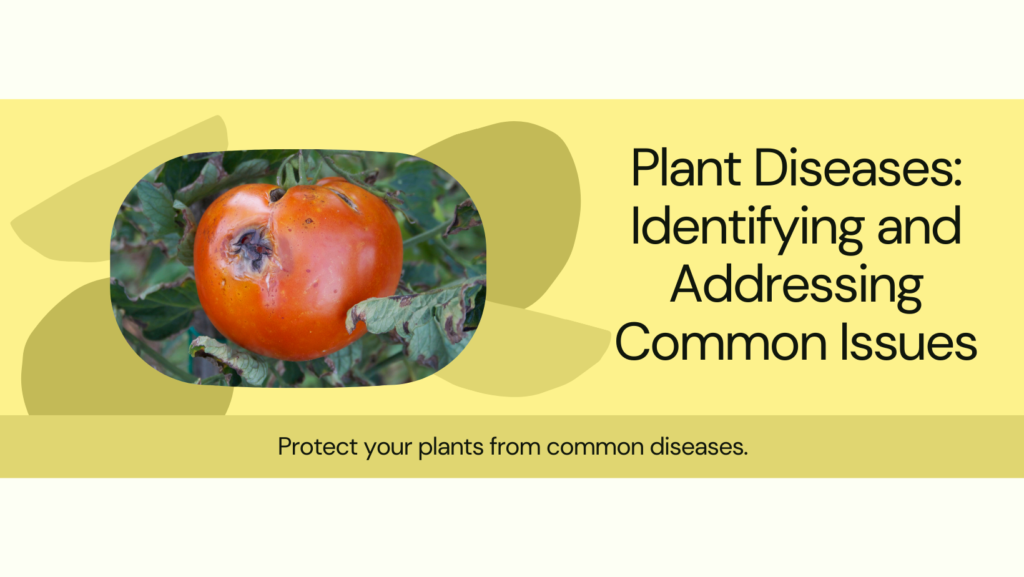
Plant diseases can be a major concern in container gardening. Keep an eye out for signs of diseases such as wilting, yellowing leaves, or discoloration. To prevent diseases, make sure to provide adequate spacing between plants, allowing for proper airflow. Additionally, avoid overcrowding your containers, as this can create a breeding ground for diseases.
To address plant diseases:
- Remove affected leaves or plants: If you notice any signs of disease, promptly remove the affected leaves or plants to prevent the spread of infection.
- Adjust watering: Proper watering is essential to prevent diseases. Overwatering can lead to fungal infections, while underwatering can weaken plants and make them more susceptible to diseases. Find the right balance and water your container plants accordingly.
- Use disease-resistant varieties: When selecting plants for your container garden, opt for disease-resistant varieties whenever possible. These plants have built-in defenses against common diseases, reducing the risk of infection.
2. Pest Infestations
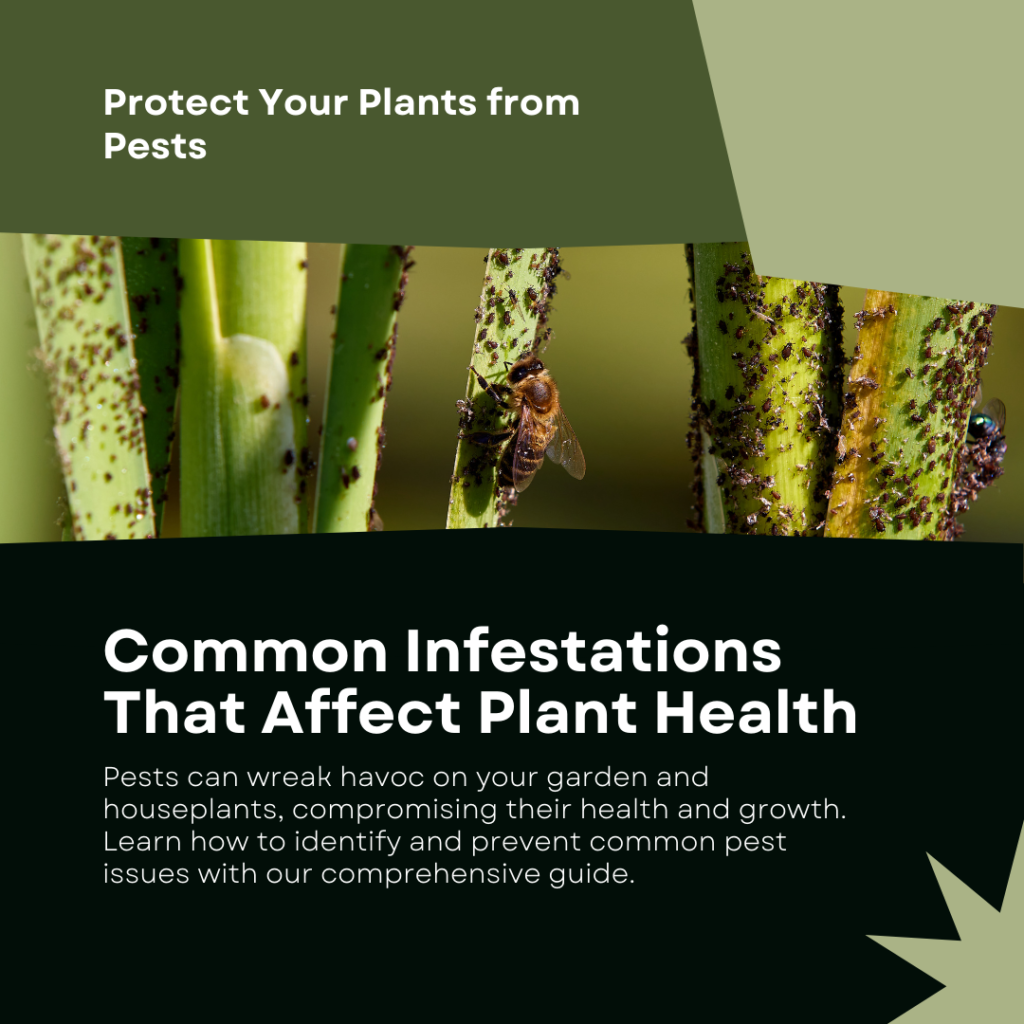
Pests such as aphids, snails, and caterpillars can wreak havoc on container plants. Regularly inspect your plants for signs of pest infestations, such as holes in leaves, tiny crawling insects, or yellow spots. To prevent pests:
- Keep your plants clean: Regularly remove fallen leaves and debris from your containers, as these can attract pests.
- Introduce beneficial insects: Encourage the presence of beneficial insects such as ladybugs and lacewings, which feed on common pests. You can attract them by planting nectar-rich flowers nearby.
- Apply organic pest control methods: If pests become a problem, consider using organic pest control methods such as neem oil or insecticidal soap. These solutions are safer for your plants and the environment.
3. Nutrient Deficiencies
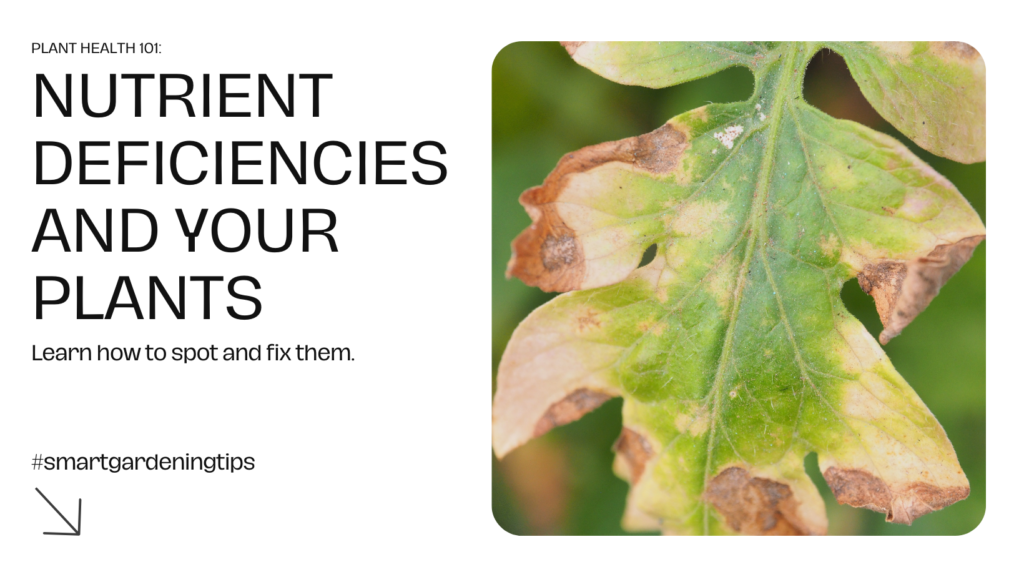
Container plants rely on the nutrients provided by the soil or potting mix. If your plants show signs of nutrient deficiencies, such as yellowing leaves or stunted growth, it’s essential to address the issue. Here’s what you can do:
“Identifying nutrient deficiencies in plants can help you determine the necessary course of action. Conduct a soil test to determine which nutrients are lacking and amend the soil accordingly. Additionally, consider using fertilizers specifically formulated for container plants, ensuring a balanced nutrient supply.”
4. Watering Issues
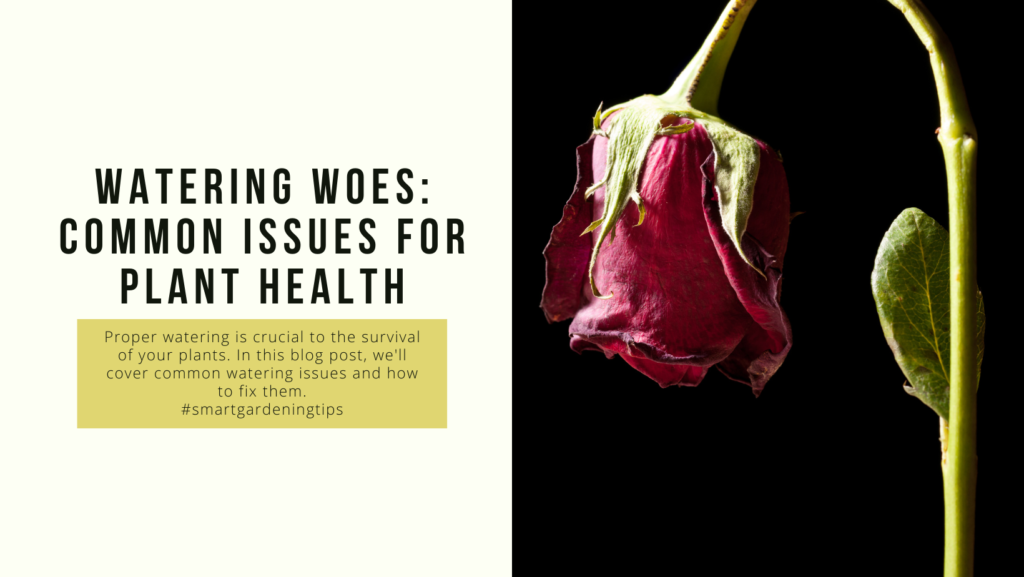
Watering is a crucial aspect of container gardening, and improper watering can lead to various problems. Overwatering can drown plant roots and cause root rot, while underwatering can lead to wilting and nutrient deficiencies. Follow these tips for proper watering:
- Check soil moisture: Regularly check the moisture level of the soil by inserting your finger about an inch deep. If it feels dry, it’s time to water. If it feels moist, wait a little longer before watering.
- Water deeply and thoroughly: When watering, make sure to saturate the entire root area of the plant. This encourages deep root growth and prevents shallow root development.
- Use self-watering containers: Consider using self-watering containers that have built-in reservoirs to maintain consistent moisture levels for your plants.
By troubleshooting these common issues and implementing preventive measures, you can maintain a healthy and thriving container garden. Remember to regularly monitor your plants, be proactive in addressing problems, and modify your gardening practices as needed for optimal results.
FAQ
Q. What are the benefits of container gardening for beginners?
A. Container gardening offers several advantages for beginners. It is a convenient and flexible way to start gardening, especially if you have limited experience or space. Containers can be easily moved around, allowing you to experiment with different plant placements. Additionally, container gardening requires less maintenance and is less prone to weeds and pests compared to traditional gardening methods.
Q. How do I choose the right containers and soil for my container garden?
A. When selecting containers, consider factors such as size, material, and drainage. Choose containers that provide enough room for your plants to grow and have proper drainage holes to avoid waterlogging. As for soil, opt for a high-quality potting mix specifically formulated for container gardening. Avoid using garden soil as it may not provide adequate drainage and nutrients.
Q. What should I consider when selecting containers for my plants?
A. When choosing containers for your plants, consider the size of the plant at maturity, the material of the container, and the drainage system. Larger plants require larger containers to accommodate their root systems. Additionally, consider the material of the container, such as plastic, ceramic, or terracotta, and ensure it has proper drainage holes to prevent water buildup.
Q. Why is soil important in container gardening?
A. Soil plays a crucial role in container gardening. It provides essential nutrients, oxygen, and moisture for plant growth. The right soil mix ensures proper drainage while retaining enough moisture for healthy root development. Use a quality potting mix that is lightweight, well-draining, and enriched with organic matter to promote optimal plant growth.
Q. How do I pick the perfect plants for my container garden?
A. When selecting plants for your container garden, consider their growth habits, sunlight requirements, and climate suitability. Choose plants that are well-suited for container gardening, such as herbs, vegetables, and flowers with compact growth habits. Research the sunlight requirements of each plant and ensure they are compatible with your available space and climate conditions.
Q. What tips can you provide for selecting the right plants for my space and climate?
A. Before selecting plants for your container garden, assess the amount of sunlight your space receives and the climate conditions unique to your area. Some plants thrive in full sun, while others prefer partial shade. Consider heat and temperature tolerance as well. Choose plants that align with your space and climate conditions to ensure their successful growth.
Q. How should I water and maintain my container plants?
A. Proper watering is crucial for container plants. Water your plants thoroughly whenever the top inch of soil feels dry. Avoid overwatering, as it can lead to root rot. Regularly check for pests, remove weeds, and prune your plants as needed. Feed your plants with a balanced fertilizer to provide essential nutrients. Regularly monitor your container garden and address any issues promptly.
Q. What should I consider regarding sunlight and container placement?
A. Different plants have varying sunlight requirements. Some plants prefer full sun, while others thrive in partial shade. Take note of the sunlight patterns in your space and strategically place your containers to optimize sunlight exposure for your plants. Rotate your containers occasionally to ensure all sides of the plant receive adequate sunlight for balanced growth.
Q. How can I troubleshoot common issues in container gardening?
A. Container gardening can have challenges such as plant diseases, pests, nutrient deficiencies, and environmental stress. Regularly inspect your plants for any signs of distress or abnormality. Research common problems and their potential solutions. Implement proper watering techniques, provide adequate nutrients, and practice preventive measures such as proper sanitation and regular monitoring to minimize common issues.
Conclusion
Container gardening is an excellent option for beginners who want to indulge in gardening and witness the magic of plant growth, even in small spaces. With the tips and guidelines provided in this article, you can create a thriving container garden that will bring the beauty of nature to your fingertips.
By carefully selecting the right containers and soil, choosing suitable plants for your space and climate, and understanding the importance of proper watering, sunlight, and maintenance, you can ensure the success of your container garden. The flexibility and convenience of container gardening make it accessible to everyone, regardless of their gardening experience or the space available.
So, get your hands dirty and embark on your container gardening journey! Enjoy the process of nurturing and watching your plants flourish in their containers. Whether it’s a balcony, patio, or any other small corner of your home, you can create a vibrant and beautiful garden that will bring joy and tranquility to your life. Happy gardening!


